This article was co-authored by Alan O. Khadavi, MD, FACAAI. Dr. Alan O. Khadavi is a Board Certified Allergist and a Pediatric Allergy Specialist based in Los Angeles, California. He holds a BS in biochemistry from the State University of New York (SUNY) at Stony Brook and an MD from the State University of New York Health Science Center at Brooklyn. Dr. Khadavi completed his pediatric residency at Schneider Children’s Hospital in New York, and then went on to complete his allergy and immunology fellowship and pediatric residency at Long Island College Hospital. He is board certified in adult and pediatric allergy/immunology. Dr. Khadavi is a Diplomate of the American Board of Allergy and Immunology, a Fellow of the American College of Allergy, Asthma & Immunology (ACAAI), and a member of the American Academy of Allergy, Asthma & Immunology (AAAAI). Dr. Khadavi's honors include Castle Connolly’s list of Top Doctors 2013-2020, and Patient Choice Awards "Most Compassionate Doctor" in 2013 & 2014.
There are 11 references cited in this article, which can be found at the bottom of the page.
This article has been viewed 44,804 times.
Hives (urticaria) are raised, red bumps on your skin caused by a reaction to a substance or situation, often due to allergies.[1] They can be as small as a dime or as big as a dinner plate. These red blotches are often very itchy, but according to the Cleveland Clinic, they usually go away within 24 hours.[2] If you think you might be suffering from hives, learn more about the features and causes of hives in order to recognize them.
Steps
Recognizing the Symptoms
-
1Look for large welts or blotches that are red and itchy.[3] This is caused by the production of histamine meant to fight off the allergen attacking your body. These welts come in different sizes and tend to spread on the different areas of your body.[4] [5]
- Sometimes they may appear brown or skin-colored. They normally have a wheal or a linear raised central area surrounded by a red ring or halo. The wheals appear annular (ring-shaped), round or oval as they enlarge.
-
2See if any of the welts have joined together to form a larger lesion. Multiple small hives will sometimes join together to form bigger hives. Pay attention to the progression of your hives to determine if this seems to be happening. Keep in mind that this is common and the hives will go away in a matter of hours.
- If you are unsure if your hives are growing, you can circle one or two with a marker and see if they expand beyond those lines.
Advertisement -
3Check to see if your lips and/or eyes are swollen. If your lips and/or eyes are swollen, then you may be suffering from angioedema. This condition is related to urticaria, but it affects deeper tissues. If the cause of your hives is angioedema, then you may also notice:[6]
- Welts that are large and thick
- Pain, redness, and warmth around the welts
- A swollen or itchy throat or tongue — if you think your tongue or throat are affected, this may be an sign of a more systemic issue, and you should call emergency services right away
-
4Pay attention to how long the hives last. Hives have a sudden onset and then go away within a matter of hours.[7] Even though hives may look severe and frighten you, they should go away without producing any long-lasting effects. Hives seldom last longer than 24 hours and, in most cases, they may even be gone much sooner.[8] [9]
- If your hives last longer than 24 hours, consult your doctor, as it could be urticarial vasculitis, an autoimmune disease often confused with simple urticaria or hives.
-
5Try to “write” on your skin with your finger. In some cases, dermatographia may be present along with hives. Dermatographia is when one “writes” on their skin with their fingernail and the tracing lingers on the skin. The writing lasts for about 30 minutes in the form of a raised linear lesion. This cause of this condition is unknown, but some people who suffer from hives may also have dermatographia.[10]
-
6Seek medical attention for serious symptoms. Hives usually go away on their own, but if they do not go away within 48 hours, then you should call your doctor. If you are experiencing any of the following serious symptoms, seek immediate medical attention.[11]
- Difficulty breathing or swallowing
- Pain or tightness in your chest
- Dizziness
- Wheezing
- Swelling in your face, especially the tongue and lips
Knowing the Causes and Risk Factors
-
1Determine whether you are at risk. Some people are at a higher risk of developing hives. Knowing if you are at risk may help you to determine if you are suffering from hives or if it may be something else. People who are at a higher risk of developing hives include:[12]
- Anyone with known allergies
- People who have had hives before or who have family members who have had hives
- People with certain medical conditions such as lymphoma, thyroid disease, or lupus
-
2Consider whether you may have been exposed to an allergen. Some people have certain allergic triggers that can cause hives to erupt. If you only have hives in one area of your body, then it may have been caused by an allergen.[13]
- Some common contact allergens include insect bites, animal dander, and latex. Think about what the affected part of your body has come into contact with to determine if an allergen may be to blame.
- Some dietary allergens may also cause more widespread hives. Common allergies that may cause hives include shellfish, nuts, fresh berries, tomatoes, eggs, nuts, chocolate, and milk.[14]
- If you suspect that you have an allergic trigger that is causing your hives, make an appointment with your doctor to get checked for allergies. To avoid hives in the future, you will need to avoid your triggers.[15]
-
3Examine the potential side effects of your medications. Hives are a potential side effect for many medications. If you develop hives and are currently taking a medication, this may be the cause.[16]
- If hives are mentioned as a potential side effect of a medication that you are taking, call your doctor right away. Your doctor may decide to try a different medication, but do not stop taking the medication without asking your doctor first.
- Treatment for hives includes antihistamines that can cause drowsiness and corticosteroids that can lead to weight gain and elevations in blood glucose levels. Corticosteroids should never be used for an extended period of time as this can cause serious side effects, such as muscle weakness and increased risk of cataracts and glaucoma.
-
4Reflect on your environment and lifestyle. Environmental and lifestyle factors may also cause hives. If you have been exposed to excess heat, cold, moisture, sunlight, or some other extreme condition, then this may be to blame for your hives. Even high levels of stress and excess exercise can cause hives sometimes.[17]
- Wear loose, light clothing like cotton.
- Avoid scratching your skin and avoid known triggers.
- Shower using warm or cool water and use a cleanser that is gentle and non-drying.
-
5See your doctor to rule out any underlying conditions. Although there are no tests to determine whether or not you are suffering from hives, your doctor can perform an allergy test and check to see if there are any other underlying conditions that may be causing the hives. Make sure that you make an appointment with your doctor as soon as possible to get a thorough checkup and diagnosis.[18]
Expert Q&A
-
QuestionWhat does hives on skin look like?
 Alan O. Khadavi, MD, FACAAIDr. Alan O. Khadavi is a Board Certified Allergist and a Pediatric Allergy Specialist based in Los Angeles, California. He holds a BS in biochemistry from the State University of New York (SUNY) at Stony Brook and an MD from the State University of New York Health Science Center at Brooklyn. Dr. Khadavi completed his pediatric residency at Schneider Children’s Hospital in New York, and then went on to complete his allergy and immunology fellowship and pediatric residency at Long Island College Hospital. He is board certified in adult and pediatric allergy/immunology. Dr. Khadavi is a Diplomate of the American Board of Allergy and Immunology, a Fellow of the American College of Allergy, Asthma & Immunology (ACAAI), and a member of the American Academy of Allergy, Asthma & Immunology (AAAAI). Dr. Khadavi's honors include Castle Connolly’s list of Top Doctors 2013-2020, and Patient Choice Awards "Most Compassionate Doctor" in 2013 & 2014.
Alan O. Khadavi, MD, FACAAIDr. Alan O. Khadavi is a Board Certified Allergist and a Pediatric Allergy Specialist based in Los Angeles, California. He holds a BS in biochemistry from the State University of New York (SUNY) at Stony Brook and an MD from the State University of New York Health Science Center at Brooklyn. Dr. Khadavi completed his pediatric residency at Schneider Children’s Hospital in New York, and then went on to complete his allergy and immunology fellowship and pediatric residency at Long Island College Hospital. He is board certified in adult and pediatric allergy/immunology. Dr. Khadavi is a Diplomate of the American Board of Allergy and Immunology, a Fellow of the American College of Allergy, Asthma & Immunology (ACAAI), and a member of the American Academy of Allergy, Asthma & Immunology (AAAAI). Dr. Khadavi's honors include Castle Connolly’s list of Top Doctors 2013-2020, and Patient Choice Awards "Most Compassionate Doctor" in 2013 & 2014.
Board Certified Allergist Hives look like red, raised welts on your skin that itch. Usually, they'll last a few hours and go away on their own.
Hives look like red, raised welts on your skin that itch. Usually, they'll last a few hours and go away on their own. -
QuestionAre hives always raised? I have red splotches over my body, they are very warm and look like hives, but my skin is very smooth.
 Chris M. Matsko, MDDr. Chris M. Matsko is a retired physician based in Pittsburgh, Pennsylvania. With over 25 years of medical research experience, Dr. Matsko was awarded the Pittsburgh Cornell University Leadership Award for Excellence. He holds a BS in Nutritional Science from Cornell University and an MD from the Temple University School of Medicine in 2007. Dr. Matsko earned a Research Writing Certification from the American Medical Writers Association (AMWA) in 2016 and a Medical Writing & Editing Certification from the University of Chicago in 2017.
Chris M. Matsko, MDDr. Chris M. Matsko is a retired physician based in Pittsburgh, Pennsylvania. With over 25 years of medical research experience, Dr. Matsko was awarded the Pittsburgh Cornell University Leadership Award for Excellence. He holds a BS in Nutritional Science from Cornell University and an MD from the Temple University School of Medicine in 2007. Dr. Matsko earned a Research Writing Certification from the American Medical Writers Association (AMWA) in 2016 and a Medical Writing & Editing Certification from the University of Chicago in 2017.
Family Medicine Physician No, hives are not always raised. If you have red, blotchy skin then you may have hives. Treatment for hives include corticosteroids and anti-itching medication like cetirizine, which eases allergic symptoms.
No, hives are not always raised. If you have red, blotchy skin then you may have hives. Treatment for hives include corticosteroids and anti-itching medication like cetirizine, which eases allergic symptoms. -
QuestionI had an allergic reaction when I was eight. It was something like hive and when I was cured by my doctor. But now I am having it again. What should I do?
 Chris M. Matsko, MDDr. Chris M. Matsko is a retired physician based in Pittsburgh, Pennsylvania. With over 25 years of medical research experience, Dr. Matsko was awarded the Pittsburgh Cornell University Leadership Award for Excellence. He holds a BS in Nutritional Science from Cornell University and an MD from the Temple University School of Medicine in 2007. Dr. Matsko earned a Research Writing Certification from the American Medical Writers Association (AMWA) in 2016 and a Medical Writing & Editing Certification from the University of Chicago in 2017.
Chris M. Matsko, MDDr. Chris M. Matsko is a retired physician based in Pittsburgh, Pennsylvania. With over 25 years of medical research experience, Dr. Matsko was awarded the Pittsburgh Cornell University Leadership Award for Excellence. He holds a BS in Nutritional Science from Cornell University and an MD from the Temple University School of Medicine in 2007. Dr. Matsko earned a Research Writing Certification from the American Medical Writers Association (AMWA) in 2016 and a Medical Writing & Editing Certification from the University of Chicago in 2017.
Family Medicine Physician You need to go and see the doctor again. You may even have to see a dermatologist. One note of caution is that taking corticosteroids for hives comes with side effects. Be careful and take them according to your doctor's instructions. Do not take them for extended periods of time.
You need to go and see the doctor again. You may even have to see a dermatologist. One note of caution is that taking corticosteroids for hives comes with side effects. Be careful and take them according to your doctor's instructions. Do not take them for extended periods of time.
References
- ↑ Alan O. Khadavi, MD, FACAAI. Board Certified Allergist. Expert Interview. 26 August 2020.
- ↑ https://my.clevelandclinic.org/health/diseases/8630-urticaria-hives-and-angioedema
- ↑ Alan O. Khadavi, MD, FACAAI. Board Certified Allergist. Expert Interview. 26 August 2020.
- ↑ Alan O. Khadavi, MD, FACAAI. Board Certified Allergist. Expert Interview. 26 August 2020.
- ↑ https://acaai.org/allergies/allergic-conditions/skin-allergy/hives/
- ↑ https://www.mayoclinic.org/diseases-conditions/hives-and-angioedema/symptoms-causes/syc-20354908
- ↑ Alan O. Khadavi, MD, FACAAI. Board Certified Allergist. Expert Interview. 26 August 2020.
- ↑ https://patient.info/skin-conditions/hives-inducible-urticaria
- ↑ http://www.aocd.org/?Urticaria
- ↑ https://my.clevelandclinic.org/health/diseases/17793-dermatographism-dermatographia
- ↑ https://www.nhsinform.scot/illnesses-and-conditions/skin-hair-and-nails/urticaria-hives
- ↑ https://www.mayoclinic.org/diseases-conditions/hives-and-angioedema/symptoms-causes/syc-20354908
- ↑ https://www.mayoclinic.org/diseases-conditions/hives-and-angioedema/symptoms-causes/syc-20354908
- ↑ http://www.aaaai.org/Aaaai/media/MediaLibrary/PDF%20Documents/Practice%20and%20Parameters/Urticaria-2014.pdf
- ↑ http://www.aafp.org/afp/2011/0501/p1078.pdf
- ↑ https://www.mayoclinic.org/diseases-conditions/hives-and-angioedema/symptoms-causes/syc-20354908
- ↑ https://www.mayoclinic.org/diseases-conditions/hives-and-angioedema/symptoms-causes/syc-20354908
- ↑ https://www.ncbi.nlm.nih.gov/pmc/articles/PMC3667285/
About This Article
Common symptoms of hives include swollen eyes and lips, pink and itchy blotches, and large welts, which can come in different sizes and spread to different areas of the body. You might also notice welts joining together to form a larger lesion. Additionally, if you draw a line on your skin with your fingernail and it leaves a raised lesion, you might also have hives. Don’t panic if you do, as hives generally go away within a matter of hours. However, you should call a doctor if your symptoms have not gone away after 24 hours, or if you experience difficulty breathing, chest pain, dizziness, or swelling of your face. For more tips from our Medical co-author, including how to be aware of common risk factors, read on!

-Step-1-Version-2.webp)
-Step-2-Version-2.webp)
-Step-3-Version-2.webp)
-Step-4-Version-2.webp)
-Step-5-Version-2.webp)
-Step-6-Version-2.webp)
-Step-7-Version-2.webp)
-Step-8-Version-2.webp)
-Step-9-Version-2.webp)
-Step-10-Version-2.webp)
-Step-11-Version-2.webp)

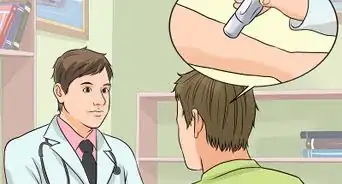
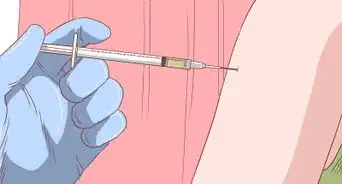
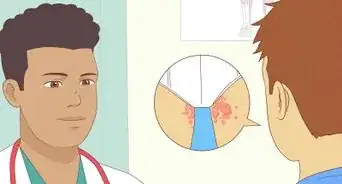


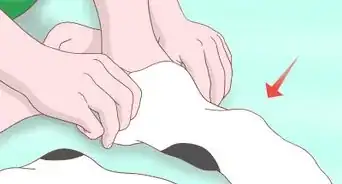
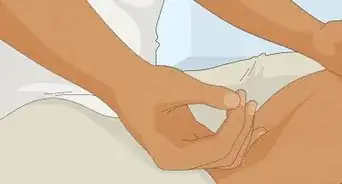


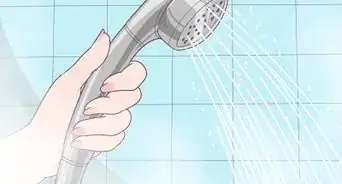
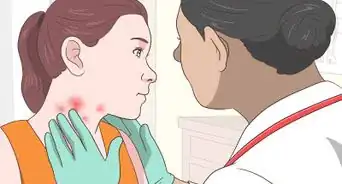

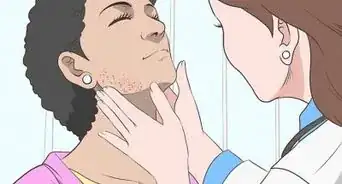







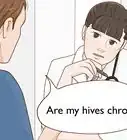

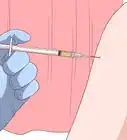
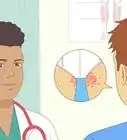



































Medical Disclaimer
The content of this article is not intended to be a substitute for professional medical advice, examination, diagnosis, or treatment. You should always contact your doctor or other qualified healthcare professional before starting, changing, or stopping any kind of health treatment.
Read More...